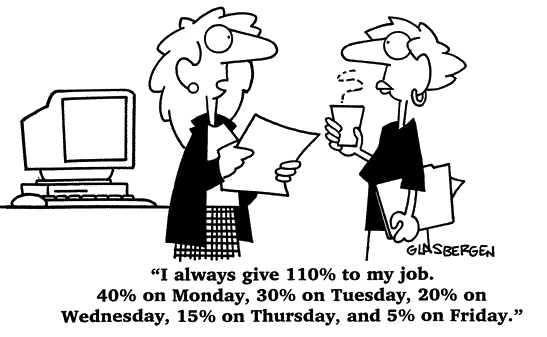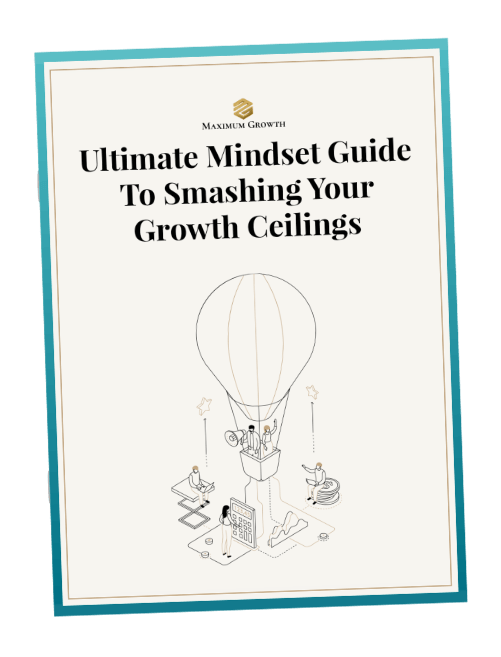
5 Levels Of Leadership
Leadership is a verb (doing word) not a noun. C W Perry states “leadership is accepting people where they are and taking them somewhere.” To succeed, you help others follow you up the ladder. If you are not moving, they are not following. You know you have achieved a leadership when the people you work with are becoming leaders themselves.
The form of leadership will change depending on the relationship you have with each person in the team. You will be on different levels with different people and the level can change quickly. People will respond to you based on the level of leadership you are on with them.
The Five Levels of Leadership
Level One: Position
Level Two: Permission
Level Three: Production
Level Four: People Development
Level Five: Pinnacle
LEVEL ONE: POSITION
You have been invited to the leadership table. Someone has seen you have leadership potential. They don’t say what they are going to do, they show what they are going to do. You have been invited to be a part of the leadership game. Here you grab the opportunity to show what you can do for the team and the organization. You have to prove you deserve the position.
When an individual received a position and title, some level of authority or power usually comes with them. You have only limited power to begin with as it must be earned from your fellow team members. The infantryman’s Journal (1954) says, “No man is a leader until his appointment is ratified in the minds and hearts of his men”
You gain leadership, not just a position.
‘Good’ leaders as Maxwell describes, which I am going to label as effective leaders as we don’t want to place a moral ‘good’ or ‘bad’ on leaders, are genuine, strive to better themselves. Frances Hesselbein said “Leadership is much less about what you do, and much more about who you are.”
What is in the way? Fears, needs, and unproductive habits! Explore the depths of who you are and understand yourself, know yourself and define your values and there will be a transformation. “Values are the soul of your leadership, they drive your behaviour”
Effective leadership changes individuals lives. It forms teams. It builds organizations. It impacts communities. It has the potential to impact the world. But never forget the position is only the starting point.
Downside of Position
Positional leaders make people feel small
By not having a genuine belief in them
By assuming people can’t instead of assuming they can
By assuming people won’t rather than believing they will
Be seeing their problems more readily than their potential
By viewing them as liabilities instead of assets
They focus on working to gain titles. They believe they have rights which has a sense of entitlement. Each of us as leaders must strive to grow up and grow into a leadership role without relying on rights.
Turnover is high for positional leaders because people don’t quit companies, people quit people
Clock watchers
People who watch the time, can’t wait to be out of there. They are already saying goodbye to coworkers at 4.30pm and are out of the door at 5pm.
Just enough workers
People will do just the bare minimum to get what they have to get done, no more.

Mentally absent
They show up, get their paycheck and leave.
You’ve heard ‘it’s lonely at the top.’ True leadership won’t be lonely at the top when you help others to become leaders, you have people walking along side you and helping you to climb the mountain. With others joining you on your leadership journey, you will find it hard to be lonely at the top.
Your leadership will not be threatened. You do not need to guard your position. Help others get where they want while you get where you want.
Moving to Level 2
Ensure you find ways to influence action. Have you asked them how you can help them? Ask them about the challenges they have in their position. Make it an opportunity to work together as a team to make a difference. Form relationships. Show interest.
Leaders don’t fake it until they make it. They demonstrate through being a leader. People will feel true and fake authenticity.
People skills, not power gets things done. “If you want to become a better leader, let go of control and start focusing on cooperation.” You move beyond your job title, move beyond your job description. You interact with people, build relationships. “You must take responsibility to learn who they are, find out their needs, and help them and the team win.”
Raise the bar
Never think you have arrived. Always raise the bar further and further.
Lifelong process
Leadership is a lifelong process. Today I received a leadership position. I will endeavor every day to become a better leader.” It is a journey. Not the destination. Effective leaders don’t take anything for granted. They keep working and leading. Leaders are initiators. Socrates said, “let him that would move the world, first move himself.”
LEVEL TWO: PERMISSION
Here, you move from “me” to “we” attitude. Building relationships develops a foundation for effectively leading others.
Relationship is more powerful than price
Relationship is more powerful than delivery
Relationship is more powerful than quality
Relationship is more powerful than service
Upside of Permission
Level 2 shifts from me to we.
Leadership is an opportunity to serve. Leadership permission increases the energy levels. Leadership permission opens up channels of communication.
On Level 2, the top-down positional leadership is replaced with side-by-side relationships.
Recently the author came across an explanation of the Chinese symbol for the verb “to listen” I thought it gave tremendous insight into the concept. The word, pronounced ‘ting’ is make up of smaller symbols with specific meaning.

Those symbols represent you, indicating that the focus is on the other person, not on yourself. The ear, the primary tool used in listening, the eyes, which we used to discover nonverbal clues to communication, undivided attention, which every person deserves if we intend to listen to all that is said, and the heart, which indicates that we are open to the other person on an emotional level, not just an intellectual one. In other words, to really listen, we must have:
Ears – I hear what you have to say
Eyes – I see what you say
Heart – I feel what you say
Undivided attention – I value who you are and what you say
Leadership permission focuses on the value each person can contribute to the team. Leadership permission nurtures trust. Trust is the foundation of permission. If you have integrity with people, you develop trust. The more trust you develop, the stronger the relationship becomes. The better the relationship, the greater the potential for a leader to gain permission to lead. It’s a building process that takes time, energy and intentionality. “When the crunch comes, people cling to those they know they can trust – those who are not detached, but involved.” James Stockdale.
Downside of Permission
The pressure is on you to build relationships. Permission leadership appears too soft for some people.
Permission leadership can be frustrating for some achievers. Permission leadership can be taken advantage of. There are four kinds of people
- Takers, those who leverage the relationship to better themselves, but not you or anyone else
- Developers, those who leverage the relationship bettering them and you.
- Acquaintances, those who live off their relationships with you but never do anything about it. They hang around waiting for something ‘good’ to happen, content to live off the success of others but do not take responsibility to grow themselves.
- Friends, those who enjoy their relationships with you, returning favour but not taking advantage of it.
Permission leaders need to be open to be effective. They need to be authentic. This type of leadership is difficult for people who are not naturally likeable. You must like people and become more likeable
The bottom line of Level 2 is that most of the downside of leadership comes from dealing with people.
Best Behaviors on Level 2
How to gain people’s permission
- Connect with yourself before trying to connect with others. The first person we must examine is ourselves. Learn your strengths and weaknesses.
- Develop a people orientated leadership style. “Leading an organization is as much about soul as it is about systems. Effective leadership finds its source in understanding” Herb Kelleher.
- Practice the Golden Rule. Treat others, as you want to be treated
- Become the Chief Encourager of your team. As a leader, you have great influence and power to lift people up. “I am glad you work with me; you add incredible value to the team.” Means a lot coming from someone who has the best interest of the team, department or organization at heart. If you become chief encourager of the people on your team, they will work hard and strive to meet your positive expectations.
- Strike a balance between care and candor. Regardless of what they do, I am committed to giving them unconditional love.
An example, Sheryl came to work with me because she was a real go-getter with a lot of potential. For six months, I watched her work, and what I discovered was that she was great at the hard side of leadership. She was energetic. She was organised. She planned the day, the week, the month, the quarter and the year. And she always got things done. But she totally neglected the soft side of leadership – the recreational part. She wasn’t winning over anyone she was leading. As a result, she wasn’t gaining influence.
Caring defines the relationship while candor directs the relationship. Leaders have to make the best decisions for the largest group of people. Therefore, leaders do not cater to the individual if it is not for the best interest of the whole. Caring should not suppress candor, while candor should never displace caring
Laws of Leadership at the Permission Level
- The Law of influence: The true measure of leadership is influence, nothing more, nothing less. How does a leader get another to do something willingly, excellently and consistently? By influencing them?
- The Law of Addiction: Leaders add Value by serving others. They lead in order to help people and add value to them.
- The Law of Solid Ground: Leaders trust the foundation of leadership. You cannot influence people who don’t trust you. Trust is the glue that holds people together.
- The Law of Magnetism: Who you are is who you attract. Birds of a feather flock together. It is a fact of life that like-minded people are attracted to one another. Again, if you want to change your team, change yourself.
- The Law of Connection: Leaders touch a heart before they ask for a hand. Connecting having the ability to identify with and relate to people in such a way that it increases your influence with them.
- The Law of Buy-In: People buy into a leader, then the vision. Before you ask people to move forward to achieve the vision, they must first buy into you as a leader. Before they buy into you as the leader, you must have earned their trust and gained permission to lead them
Beliefs that help a leader move up to level 3
- Relationships alone are not enough
- Building relationships requires twofold growth. People must grow with each other. Growing requires compatibility. Growing with each other requires intentionality.
If you are married or in a long term relationship, then you probably how these dynamics come into play. When you first meet your partner, you moved towards each other, based on attraction, common ground and shared experiences. You established the relationship. However, the relationship can’t last if you never go beyond those initial experiences. To stay together, you need to sustain the relationship. That requires common growth. If you don’t grow together, there is a very likely change you may grow apart.
Similarly, if you are having any staying power as a leader, you must grow towards and with your people. Just because you have developed strong relationships, don’t think you are done on the relationship side. - Achieving the vision as a team is worth risking the relationship. Risk always presents in leadership. Any time you try to move forward there is a risk. There is no progress without risk.
If people relate to the company they work for, if they form an emotional tie to it and buy into its dreams, they will pour their hearts into making it better. What is the key link between people and the company? The leader they work with. That leader is the face, heart, and hands of the company on the day-to-day basis. If the leader connects and cares, that makes a huge difference.
Guide to Growing through Level 2
The basic guidelines will help you grow as a leader
- Be sure you have the right attitude toward people
- Connect with yourself
- Understand where you come from
- Express value for each person on your team
- Evaluate where you are with your team
- Accept the whole person as part of leading
- Make a fun goals
- Give people your undivided attention
- Become your teams encourager in chief
- Practice care and candor
WHAT’S YOUR Growth Ceiling?
Growth Ceiling Definition: Invisible barriers, challenges and problems preventing you from levelling up
Fact: All business problems are personal problems in disguise
Take Our Maximum Growth Quiz To Identify Your Growth Ceiling:
LEVEL THREE: PRODUCTION
Effective leaders always make things happen. They get results. They can make a significant impact on an organization. Not only are they productive individually, but they also are able to help the team produce. This ability gives Level 3 leaders confidence, credibility, and increased influence.
No one can fake Level 3. Either you are producing for your organization and adding to its bottom line (whatever that may be) or you’re not. Simple.
They are self-motivated to produce. As a result, they create momentum and develop an environment of success, which makes the team better and stronger. They show promise. They have connections. They play politics. They have seniority. The organization is desperate.
Upside of Production
- Leadership production gives credibility to the leader. Authentic leaders know the way and show the way productively. Their leadership talk is supported by their walk. They deliver results. They live on their performance, not their potential. They lead by example. And their ability to get results tends to silence their critics and build their reputation.
They take their people where they want to go, they don’t send them there. They are more like a tour guide than travel agents. Why? Because people always believe what we do more than what we say.
- Leadership Production Models and sets the standard of others visually. That’s the power of production. If you can develop solid relationships with people and you can produce, you can be an effective leader. “His cardinal mistake is that isolates himself allows no one to see him. ”Lincoln. He knew that leaders need to be among their people, inspiring them with their ability, letting them see what the standard should be for their performance. When leaders produce, so do their people.
- Leadership production brings clarity and reality to the vision. Leaders constantly communicate their vision to the company.
- Leadership production solves a multitude of problems. George C Marshall said “Morale is the state of mind. It is steadfastness and courage and hope. It is confidence and zeal and loyalty… it is staying power with people, the spirit which endures until the end – with all things possible.
- Leadership production creates momentum.
Momentum takers: The vast majority of people don’t start or stop anything, they just go along for the ride. Their productiveness is based almost entirely on what others do to make things happen in the organization. For that reason, they need effective leaders who produce and create a productive environment. It is defined as “faith in the leader.
Momentum breakers: Challenges morale and prevents others from producing.
Momentum makers: These are leaders, they produce. Make things happen.
- Leadership production is the foundation for team building. No one wants to leave a champion team.
Downside of Production
- Being productive can make you think you’re a leader when you are not. Keep your eye on the ball. Possess the desire to take your team to the highest level.
- Producing leaders feel a heavy weight of responsibility for results. Honesty makes a leader who reached level three tire of leading because of the weight of responsibility they feel. Most leaders experience days when they wish no one was watching their performance, looking to them for direction, or wanting them to make something happen. However, effective leaders understand that the cost of leadership is carrying the responsibility of their team’s success on their shoulders. That is a weight every leader feels starting on level 3. You will have to decide whether you are willing to carry it.
- Production leadership requires making difficult decisions. A billionaire oilman and environmental advocate T Boone Pickens says “be willing to make decisions. That’s the most important quality in an effective leader. You’ll say today I look back, I regret the decisions I failed to make more than I do the wrong decisions I did make.”
As a leader on level 2 you must make a difficult decision to
- Be successful before you try to help others be successful
- Hold yourself to a higher standard than you ask of others
- Make yourself accountable to others
- Accept responsibility for personal results
- Admit failure and mistakes quickly and humbly
- Ask from others only what you have previously asked of yourself
- Gauge your success on results, not intentions
- Remove yourself from situations where you are ineffective.
Why must I always go first? Going first may not always be easy or fun, but it is always a requirement of leaders. It paves the way for the people who follow and increases their chance of success for completing the journey.
4. Production leadership demands continual attention to level 2. Keep developing the relationship and caring for them as you produce results.
Best Behaviors On Level 3
How to make the Most production in leadership
- Understand how your personal giftedness contributes to the vision. If you are a leader, you must have a sense of vision for your leadership. And it must align, at least during the current season, with the vision of the organization you serve.
4 areas to contribute the most to productivity of an organization or team.
- Influencing people (leadership)
- Connecting with people (relationships)
- Communicating with people (speaking)
- Creating resources to help people (writing)
“Do what you do so well that those who see you do what you do are going to come back to see you do it again and let others that they should see you do what you do.” Walt Disney
If you want your team or department to excel at what they do, then you need to excel at what you do. Productivity has to start with the leader. Focus there first, and you will earn opportunities to help others improve and reach their potential.
- Cast vision for what needs to be accomplished. Leaders help people define the success of their vision. Leaders help people commit to the success of the vision. Leaders help people experience success
- Begin to Develop your people into a team. Build complimentary teams. Team members should understand their mission. Team leaders should make it happen. Team members should receive feedback about their performance. Team leaders should make it happen. Team members should work in an environment which is inspiring and full of growth. – team leaders should make it happen. Leaders should create an environment for their people that inspires, challenges and stretches them.
- Prioritize the things that yield high returns. What is the key to productivity? Prioritizing. To be an effective level 3 leader, you must learn to not only get a lot done, but to get a lot of the right tasks done. “Most people lead busy but undisciplined lives. We have ever-expanding “to do” lists, trying to build momentum by doing, doing, doing – and doing more. And it rarely works. Those who build the good-to-great companies, however, make as much use of ‘stop doing’ lists as ‘to do’ lists. They displayed a remarkable discipline to unplug all sorts of extraneous junk” Good to Great, Jim Collins.
Most leaders feel a great deal of pressure to get a lot done. Productive leaders understand that activity is not necessarily accomplished. They plan accordingly.
- Be willing and ready to be a change agent
Vision: Must be similar, and they will all stand together.
Values: Must have similar values
Relationship: Great teams have commitment to the team and the vision.
Attitude: If you are going to get people to work together for change, their attitudes must be about change.
Communication: For change to occur, communication must be open, honest and ongoing. - Never lose sight of the fact that results are your goal. Effective leaders know that results always matter, no matter the obstacles they face, what the economy does, what kind of problems their people are experiencing and so on.
People buy into leaders, then their vision. That buy in comes from two things. The relationship you have with them and the results you demonstrate in front of them.
The Laws of Leadership at the Production Level.
The Law of Respect: People follow leaders stronger than themselves.
The Law of Magnetism: You are who you attract
The Law of Picture: People do what people see
The Law of Victory: Leaders find a way for the team to win
The Law of The Big Mo. Momentum is a leader’s best friend
The law of Priorities: Leaders understand that activity is not necessarily accomplished
The Law of Sacrifice. A leader must give up going up
The Law of Buy In: People buy into the leader, then the vision
Beliefs That Help a Leader Move up To Level 4
- Production is not enough.
- People are an organization’s most appreciable asset.
- Growing leaders is the most effective way to accomplish the vision
- People development is the greatest fulfilment for a leader
It is impossible to help others without helping yourself.
Guide to Growing through Level 3
- Be a team member you want on your team
- Translate personal productivity
- Understand everyone’s productive niche
- Cast vision continually
- Build your team
- Use momentum to solve problems
- Discern how team members affect momentum
- Practice the Pareto principle
- Accept your role as change agent
- Don’t neglect level 2
LEVEL FOUR: PEOPLE DEVELOPMENT
Effective Leaders gauge and notice potential in people regardless of their position and bring out the best in people. These leaders transition from producers to developers. They invest time, money and thinking into growing others as leaders. They put 80% of their focus on their personal productivity and 20% focused on developing and leading others.
The Upside of People Development
Leadership becomes even stronger and the potential of the organisation increases dramatically when you develop people. This is because as your people reach their potential your organization will reach its potential. You must believe in their value, in their dreams and believe it is worth the investment that is required.
Now true leadership is not what happens when you are there, but when you are not there. You can’t do everything. You don’t want everything to come crashing down when you are not there. Transfer the leadership so others have ownership and where they want responsibility.
Everyone has the potential to lead, at least in some area and in some capacity. When you give someone responsibility and authority, they not only learn, but they start to fulfill their leadership responsibilities. That action transforms people and organisations.
All leaders feel the weight of responsibility for leading. When you have others leading, you share the load of leadership
If you think back to your own leadership journey, someone gave you an opportunity. No leader is self-made. Everyone was given a start by someone.
The Downside of Leadership
There are no guarantees that the time, energy and effort you invest in someone will work out. People development requires a very high level of maturity. It requires a high level of skill.
If you want to lead at level 4 you need to focus 80% of your time helping others to grow, learn and achieve. If you always focus on yourself you will feel their needs interfere with your goals. The focus is on you, not on growing your team. Think ‘what can I do for others.’ Zig Ziggler said it best “if you help others get what they want, you get what you want.”
As a leader you are forge ahead, you break ground and you make mistakes. You know this is true for you and you know it’s true for others too. You allow room for growth.
Your ultimate job is to work yourself out of your job. That doesn’t mean freedom for you, but stepping up to a higher role.
Best Behaviors on Level 4
Only leaders can develop other people to become leaders. You have to walk your talk.
Recruiting is the first and most important task in developing people. If you get the best players and coach them soundly, you’re going to win. There are Four C’s to look for in a potential leader.
- Chemistry. Do you like them? You’ll want to work and mentor those you like
- Character: DO you trust them? You’ll want to work with people who you trust.
- Capacity: Assess their capacity to handle stress, their skills, their leadership and attitude
- Contribution: Do they have an X factor? This means will they contribute beyond their job responsibilities and lift the performance of the team?
Successful leaders help people to find the right seats. Sometimes trying and failing. You take this in your stride.
How does a leader equip people to do their work and succeed at it? The best method is a 5-step equipping process is;
Step 1: do it (competence)
Step 2: I do it and you are with me (demonstrate)
Step 3: you do it and I am with you (coaching)
Step 4: you do it (empowerment)
Step 5: you do it and some is with you (reproduction)
This method will equip leaders and begin to train them to equip others.
Challenge people in every area of their highest values (gain their permission first). Read books, attend conferences, get mentoring. Help them to focus on being the best version of themselves.
Beliefs That Help a Leader Move Up To Level 5
Be willing to keep growing yourself. Everyone has something to teach you. Remaining coachable yourself.
Work through your own issues. Get mentoring if you need it, as you expand, so does your leadership, your influence and your impact. Remain approachable as a leader, a role model and coach.
LEVEL FIVE: PINNACLE
People follow because of who you are and what you represent. You stand out from everyone else. They lead so well for so long that they create a legacy of leadership in the organization they serve.
The Upside of The Pinnacle
Your influence has expanded beyond your reach and your time. You are developing a generation of leaders who will develop the next generation of leaders. You have an opportunity to impact beyond your lifetime. Not many people achieve this level of leadership.
The leadership journey has the potential to take individuals through a lifelong process in three phases; learn, earn, return. Learning as you grow up the leadership ladder. They then earn a decent income. Then return is where you give back to others.
The Downside of The Pinnacle
You think you have arrived. If you think you’re on the way up, you are surely going down. You have the danger of being at the top and think there is no more to grow and learn. You can never arrive. You can only drive higher. If leaders who reach the pinnacle want to make the most of their time there, they must remain focused on their vision and purpose and continue leading at the highest level.
At the Pinnacle, you can lose focus of how hard you worked and expect more from other with less time and skills as you.
Best Behavior of Level 5
Leadership is about others, not about the leader. Cultivate your followers. Your drive is about being succeeded instead of needed. Everyone is dispensable. You create pride in your success.
The empowerment leadership model shifts away from position leadership to people power where all people are given leadership roles so they can contribute to their fullest capacity. You have to bring your imagination, skill and commitment to the table. You have to give it your all to all potential level 5 leaders because you may be surprised by who finishes the strongest.
You have the ability to lead and a platform to persuade. Use the opportunity whenever possible to pass on what you have learned to help others. Leadership is influence. Leverage it to add value to others.
Leaving a successor is the greatest leadership development you can offer. Success is dependent upon the leader with the baton handing it off to the next leader when both are running at full speed. You’ll hurt the organisations momentum by slowing down. Plan your succession and leave before you have to.
The Laws Of Leadership at the Pinnacle Level
We all have strong intuition in the areas of our giftedness. What leaders in level 5 possess in abundance is leadership intuition. Effective leaders will trust what Emmerson called the ‘blessed impulse’ That a hunch that informs you that something is right. Intuition is the ability to experience immediate insight without rational through. Learn to trust it.
The goal in life is not to live forever. The goal in life is to create something that does.
Lastly, when you develop a follower, you gain a follower. When you develop a leader, you gain a leader and all his followers. Every time you develop a leader, you make a difference in the world. This has a ripple effect on those they develop and lead.
Guide to Being Your Best At Level 5
Remain humble, maintain your core focus, create an inner circle to keep you grounded, plan your succession and your legacy. Lastly, focus on player development
- Explanation. tell them what you want them to know and do
- Demonstration. Show them what you want them to know and do
- Initiation. Let them show you that they know what to do
- Correction. Ask them to change what they are doing incorrectly.
- Repetition. Ask them to do it right over and over and over again.
If you prepare properly, you may never be out scored, but you will never lose. You always win when you make the full effort to do the best of which you’re capable.
As a leader, you have to know yourself. All great leaders have a greater sense of self, clarity of purpose and crystal-clear vision. You have to have the willingness to speak about what’s really important to you, even if the outside world disagrees. It involves taking the risk of being different for the sake of being real: an original instead of a copy.
Use these levels of leadership as stepping stones for you in your leadership development and evolution. There is no end to where you can go.
What level of leadership are you playing at? And what can you do to step up?
with gratitude,


